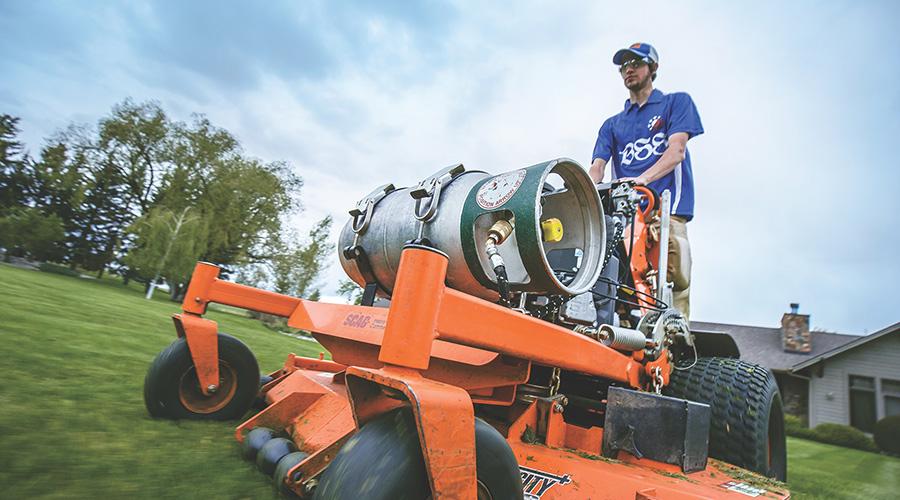Electric Utility Vehicles Offer Versatility
Because electric utility vehicles are versatile enough to perform a number of different duties for grounds departments, the vehicles often end up in situations where the lack of noise during usage actually can become a safety issue.
"I love to have a quiet vehicle, but when you're working the football game and there's 100,000 people coming and going from the stadium, and you're trying to service trash cans, and you're in an electric vehicle, they have no clue you're there, and they might walk in front of you," Burns says. "With a gas vehicle, it's louder. People will hear it and know you're there. They feel like it's a safety thing.
"That's pretty isolated, and just a specific instance. On a day-to-day basis, it's not that critical, but it's nice for students to know you're coming."
The University of Texas does not use beepers on campus vehicles so as to not seem rude when making their way through students and other guests. But Burns also sees an upside to the quiet nature of the electric machines.
"We have commencement ceremonies, and in an electric cart while the ceremonies are going on, you can actually get fairly close without disturbing people," he says.
No Attachments Necessary
While manufacturers are rolling out new models of utility vehicles featuring an ever-growing array of attachments for such uses as snow removal and mowing, such features are not a major consideration for every customer. Neither the University of Texas nor Lexington Medical Center pay much attention to attachments when specifying equipment. Snow is rarely a factor at either facility.
"Attachments, for us, are not that big of a consideration," Bolick says. "When we last bought (a utility vehicle), we bought a blade to go on the front for the infrequent snow. When the snow hits us, it hits us hard because we're not prepared. Luckily, we haven't had to use it the last few years. We have a small sprayer, but that's the only attachment that we readily use."
The situation is the same at University of Texas, which generally uses its utility vehicles for transporting personnel, hauling landscape materials and tools, and carrying debris.
Attachments "really don't factor in at all," Burns says. "We have not used our carts that way. One time, several years ago, we almost purchased a cart that had a lift bed on it, to be used for trimming hedges, but we determined it wasn't the right way to go. It was too much money for us. It wasn't cost-effective.
"We don't have any hydraulic dumps. We have a couple of electric dumps, but most of our carts are manual. We can dump the beds, but it's all manual lifts. At lots of campuses, with snowy areas, they use their carts a lot for plowing and sweeping. If we were in that situation, we'd be looking at that."
Related Topics:














